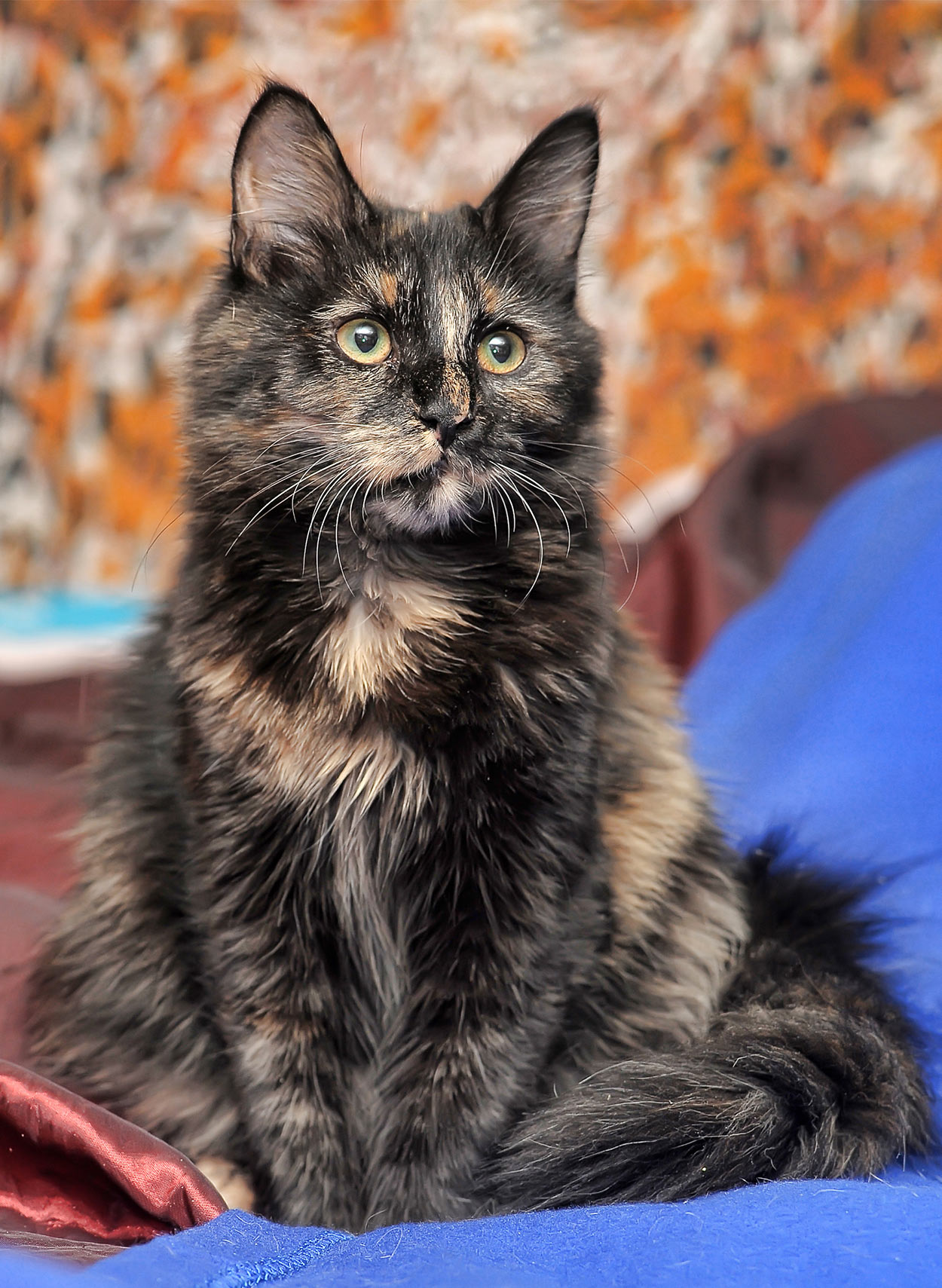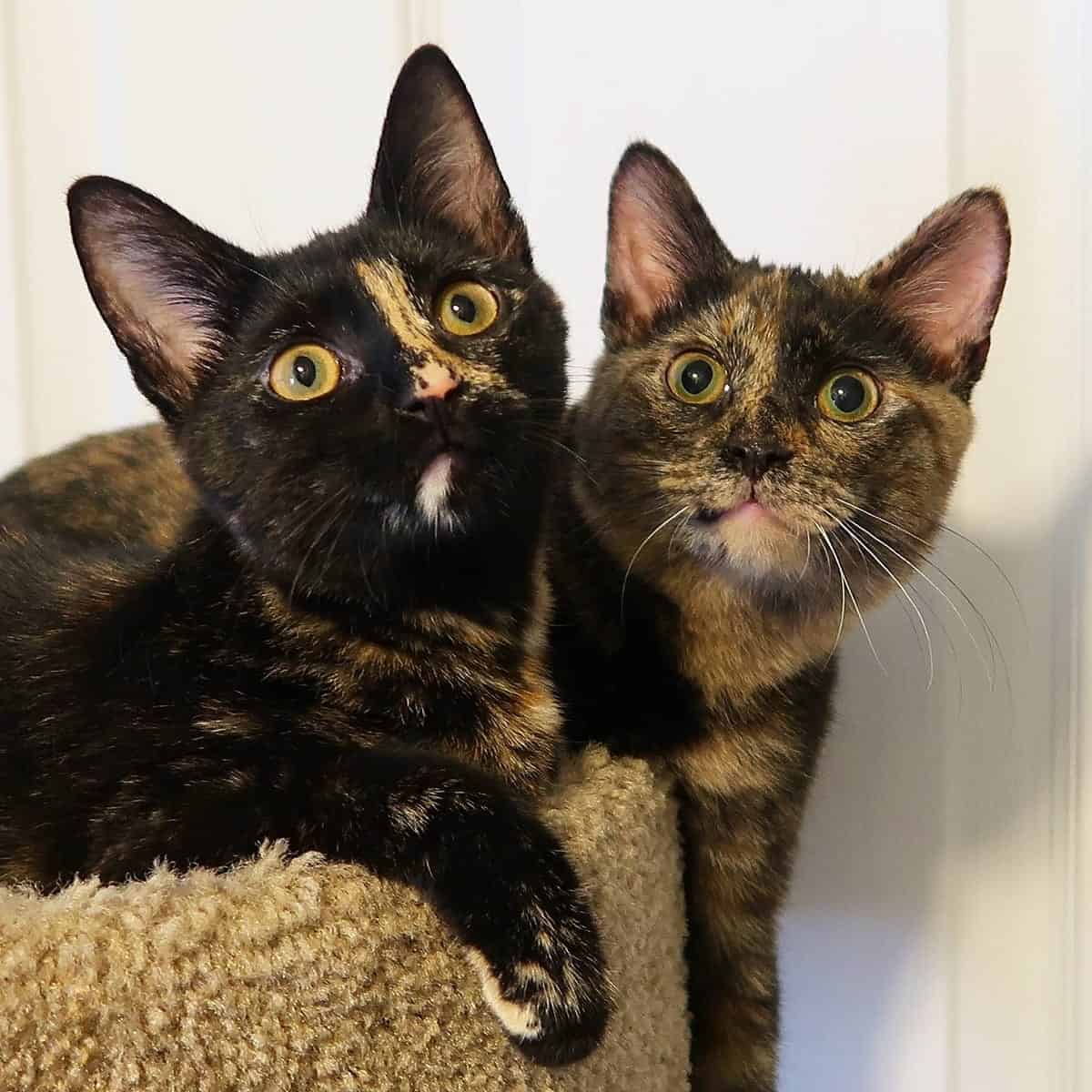There's something truly special about a cat with a coat that seems to tell a story all its own, and when it comes to the creatures known as torties, this is very much the case. These wonderful animals, with their coats that mix and mingle colors in such a striking way, often capture the hearts of anyone who sees them. They are, you know, quite the sight to behold, presenting a sort of living artwork with every move they make. So, if you've ever found yourself wondering about these fascinating felines, you're certainly in good company, as many people are drawn to their distinctive look and the tales that come with it.
You might be surprised to learn that when we talk about a tortie cat, we're not actually referring to a specific kind of cat in the way we might speak of a Siamese or a Persian. No, it's more about the beautiful design of their fur, a pattern that is, in a way, quite unlike any other. This particular arrangement of colors is what gives them their common name, which, you know, comes from how much it looks like the material once used for decorative items. It’s a color scheme, rather than a breed lineage, that sets these furry friends apart in the big world of house pets.
These captivating cats, often called torties for short, are known for more than just their striking looks; they also tend to have personalities that are just as rich and varied as their coats. If you're thinking about bringing one of these creatures into your home, or perhaps you just want to get a better grasp of what makes them tick, there's quite a bit to explore about their unique patterns and what those patterns might mean for their general way of being. We will, of course, get into some interesting bits about these lovely animals, giving you a clearer picture of their traits and what makes a tortie cat so very cherished.
Table of Contents
- What is a Tortie Cat Anyway?
- The Tortie Cat Coat - More Than Just Colors
- Are Tortie Cats Always Girls?
- The Rare Male Tortie Cat
- What Makes a Tortie Cat So Special?
- Tortie Cat Personality - A Fiery Spirit?
- How Do Tortie Cats Get Their Look?
- Spotting the Different Tortie Cat Types
- Tortie Cat vs. Torbie Cat - What's the Scoop?
- Tortie Cat Myths and Legends
What is a Tortie Cat Anyway?
When people speak of a tortie cat, they are, in fact, referring to a specific kind of fur design, not a particular kind of cat. This design gets its name because it looks quite a lot like the material that comes from a certain shell, which, you know, has a mix of dark and lighter shades. So, a tortie cat is simply a feline friend with this distinct pattern on their fur. It's a blend of colors, often deep black or brown mixed with shades of orange, red, or gold, creating a sort of mosaic effect across their body. You might see these colors swirled together, or perhaps in patches that seem to melt into one another, which is, in a way, truly captivating to observe.
The Tortie Cat Coat - More Than Just Colors
The coat of a tortie cat is, honestly, a real showstopper. It's not just a single color, but a whole collection of them, often featuring deep, dark tones alongside warmer, lighter ones. This combination gives them a look that is quite striking and, you know, easily recognizable. The term "tortoiseshell" itself came about because the pattern on these cats' fur reminded people of the mottled appearance of a material once used for various items, like combs or decorative boxes. It's this unique blend of colors, rather than any specific physical trait, that makes a cat a tortie. In essence, it's about the artwork their fur displays, which, in some respects, is quite a beautiful thing to see.
Are Tortie Cats Always Girls?
This is a question that comes up quite often, and for a very good reason. It turns out that, generally speaking, most tortie cats you meet will be female. This isn't just a coincidence; it's actually tied into the way their genetic makeup works. The genes that decide fur color, especially for the orange and black shades seen in torties, are located on what we call the X chromosome. Since female cats have two X chromosomes, they have the chance to carry both the gene for black fur and the gene for orange fur, allowing these colors to show up together in their coat. So, yes, it's almost a given that your tortie cat will be a girl, which is, you know, a pretty interesting fact about them.
The Rare Male Tortie Cat
While it's true that the vast majority of tortie cats are female, there are, on occasion, male torties. These male tortie cats are, however, extremely uncommon. For a male cat to have this kind of coat pattern, he usually needs to have an extra X chromosome, making his genetic code XXY instead of the typical XY. This condition, which is similar to a human condition, is quite rare in felines. When a male tortie cat does appear, he is often unable to have kittens of his own, which is, you know, another aspect of this unusual genetic occurrence. So, if you ever come across a male tortie, you're seeing something truly special and, in a way, quite unique in the cat world.
What Makes a Tortie Cat So Special?
Beyond their truly stunning appearance, tortie cats are often celebrated for their captivating blend of personality traits. People who spend time with these cats often describe them as having a spirited nature combined with a deeply affectionate side. It's as if their diverse coat colors mirror a rich mix of behaviors and moods. They can be quite playful and energetic one moment, then settle down for a long, cozy cuddle the next. This range of character, which is, you know, often referred to as "tortitude," makes them very engaging companions. They are certainly not dull, and many people find their lively presence to be quite a joy in the home, which, in a way, adds to their special appeal.
Tortie Cat Personality - A Fiery Spirit?
The idea that tortie cats possess a "fiery spirit" is something you'll hear quite often among those who adore them. This doesn't mean they're always grumpy or difficult; rather, it suggests they have a strong will and a clear sense of what they like and don't like. They might be quite vocal, letting you know their thoughts with a variety of meows and purrs, or they might be very particular about their routines and preferences. Yet, alongside this spiritedness, they are also known for being incredibly loving and devoted to their human companions. It's this interesting mix of independence and deep affection that, you know, truly defines the personality of a tortie cat, making them, in some respects, quite unforgettable creatures.
How Do Tortie Cats Get Their Look?
The striking appearance of a tortie cat is, in fact, the result of a long process of development that has shaped the way animal characteristics are passed down through generations. Their unique fur pattern, with its mix of dark and warm colors, comes from the way genes interact. As we touched on earlier, the specific genes responsible for these colors are found on the X chromosome. Because female cats have two X chromosomes, they can carry different color instructions on each one, leading to the beautiful blend of shades we see. This natural process, which has been unfolding for ages, is what gives each tortie cat its one-of-a-kind design, making them, you know, a true marvel of natural artistry.
Spotting the Different Tortie Cat Types
While the basic idea of a tortie cat involves a mix of black and red or orange, there are, in fact, several variations in how these colors show up. You might see what's called a "dilute tortie," where the colors are softer, like a pale blue-grey mixed with cream or light peach. Then there are "patched" torties, where the colors appear in distinct, solid areas, almost like puzzle pieces fitted together. Other tortie cats might have a "bridled" pattern, where the colors are more swirled and blended, creating a sort of marbled effect. Each of these different looks is, you know, a slight twist on the classic tortie pattern, making every tortie cat a truly individual work of art, which is, in a way, quite charming.
Tortie Cat vs. Torbie Cat - What's the Scoop?
It can be a little confusing when you hear terms like "tortie" and "torbie" being used, as they sound quite similar, but they do describe slightly different things when it comes to cat coats. A tortie cat, as we've discussed, has those distinct patches or swirls of black/brown and red/orange, without any stripe patterns within the color areas. A "torbie" cat, on the other hand, is essentially a tortie with the added element of tabby stripes. So, imagine a tortie's classic color mix, but then, you know, look closer and you'll see faint or even clear tabby stripes within the red and black patches. It’s a subtle difference, but it gives the torbie cat a slightly different visual texture, which, in some respects, is quite interesting to observe.
Tortie Cat Myths and Legends
Throughout history, tortie cats, with their striking appearance, have inspired all sorts of stories and beliefs across various cultures. In some places, these cats are thought to bring good fortune and are seen as symbols of luck, which is, you know, a lovely idea. There are tales that speak of them protecting homes from bad spirits or bringing wealth to their human companions. Their unique, almost mystical, look has certainly fueled the imagination of many. These fascinating felines have also, you know, found their way into modern culture, appearing in various online jokes and pictures that celebrate their distinct personalities and looks. It seems their charm is quite universal, inspiring admiration from cat lovers all over the place, which, in a way, is pretty neat.


